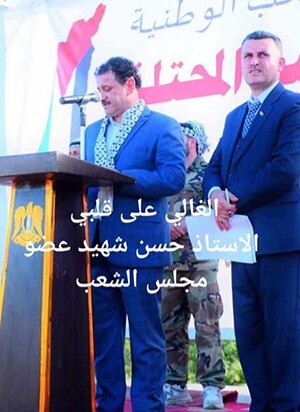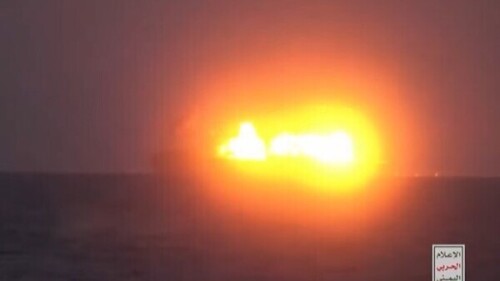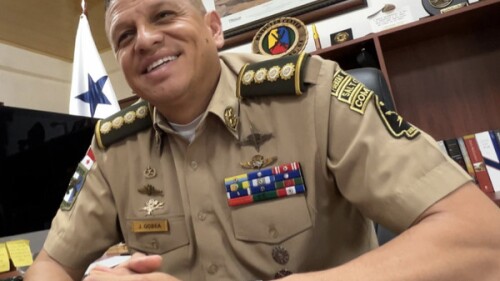This year, 5 April was the world “al-Quds Day” (“Jerusalem Day”) an event organised by Iran in the name of supporting the Palestinian cause. Armed factions across the region that are backed by Iran are known to put on displays and events for al-Quds Day. This includes groups within the Local Defence Forces network (LDF) in Syria. The Aleppo region is arguably the epicentre of the LDF and al-Quds Day activity was well in evidence there. Below are some observations on the event in the Aleppo area this year.
Interestingly, the al-Quds Day displays in Aleppo had a tribal component to them, being organised as a conference of clans, tribes and ‘patriotic elites.’ One example of the tribal component was the attendance by representatives for the Asasina tribe (a branch of the larger Dulaym clan). In the LDF network, members of the Asasina tribe in the Aleppo area have fighters who are collectively dubbed the Asasina Brigade (aka Dushka Brigade) and led by Khalid Jadih (aka Abu Hasan Dushka), who is a cousin of Hasan Shahid, an independent member of the Syrian parliament. While reports of Iranian outreach to tribes and building influence among them are normally associated with the regions of eastern Syria, these phenomena are also in evidence in the Aleppo region, and the matter is not simply confined to the prominent LDF group the Baqir Brigade and the independent member of parliament it managed to get elected (Omar al-Hasan).
When I asked one of the participants from the Asasina Brigade what his message was for Quds Day, he said: “The message we want to convey to Israel is that the Palestinian cause is the cause of every Muslim man, and the cause of all Arabs. And we in Syria- tribes, army and auxiliary forces- are in solidarity with our brothers in Palestine and Gaza. Israel should know that this day will come when the borders will be lifted.”
The overall event was overseen by two figures: Shaykh Qusay Ahmad al-Waysat, and Liwa al-Quds commander Muhammad Sa’id. Liwa al-Quds, which has origins in Syrian Palestinians of the Aleppo area and is one of the most prominent ‘auxiliary formations’ for the Syrian government forces, was once of the main formations in the LDF. The group is mostly supported by Russia today. Nonetheless, Liwa al-Quds’ forces in Aleppo still retain links with the Iranians. This example should provide some caution against the idea of a strict dichotomy between Russia and Iran when it comes to cultivating influence and links among armed formations on the Syrian government’s side.











